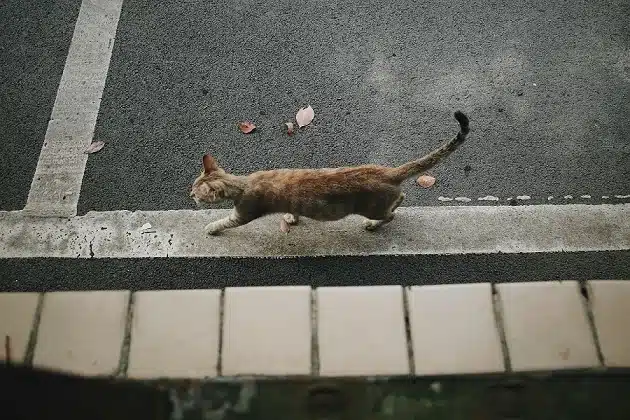When your beloved cat doesn’t return home as expected, panic can quickly set in. Whether your feline companion is a seasoned explorer or just recently started venturing outdoors, a sudden disappearance can leave you feeling helpless. But before you assume the worst, it’s important to understand how long an outdoor cat might go missing, why this happens, and what steps you can take to bring them home safely.
How Long Do Outdoor Cats Typically Go Missing?
The timeline for a missing cat’s return can vary widely. Many cats return within 24 to 48 hours, especially if they are used to being outdoors. However, some may stay away for several days—or even weeks—before making their way back. It’s not uncommon to hear heartwarming stories where a cat came back after a month or more, appearing completely healthy as if nothing had happened.
The chances of finding a lost cat after 24 hours remain surprisingly high, particularly in the first week. Cats are intelligent and resourceful animals, and their strong sense of smell and spatial memory often guide them home. So if your cat is missing, don’t lose hope too soon.

How to find a lost cat
Why Do Outdoor Cats Go Missing?
Understanding why cats run away or go missing can help you predict their behavior and plan your search accordingly.
1. Curiosity and Territory Expansion
Outdoor cats are natural roamers. They may leave their familiar territory to explore a new area, chase prey, or interact with other animals. Sometimes they simply wander too far and become disoriented.
2. Injury or Illness
If a cat is injured or unwell, it will often find a quiet, hidden spot to recover. Unfortunately, this makes them harder to locate. A sick or injured missing kitty may not respond when called, especially if in pain or frightened.
3. Trapped or Locked In
Cats are curious creatures and can easily get trapped in sheds, garages, basements, or under porches. Many owners have found their lost cat just a few houses away—unintentionally locked inside by a neighbor.
4. Scared Away
Unexpected sounds like fireworks, thunderstorms, or barking dogs can cause even confident cats to bolt. Once startled, they may hide in silence for days before attempting to return.
5. Relocation Confusion
If you’ve recently moved, relocating a cat can cause disorientation. The cat may try to return to its previous home, especially if not properly acclimated to the new environment. You can learn more about post-move safety in this guide on keeping outdoor cats safe and healthy.
What Are the Chances of a Missing Cat Coming Back?
While every case is different, many cats return within the first few days. The chances of finding a lost cat after 24 hours may decrease slightly over time, but long absences don’t necessarily mean they’re gone for good.
Cats have excellent homing instincts, and in many cases, house cats can find their way home, even after being away for weeks. In one study, most indoor-outdoor cats were found within a 3–5 house radius from their home.
If your cat came back after days or weeks, consider yourself lucky—but also take steps to prevent another disappearance.
What To Do When Your Cat Goes Missing
If your cat is missing, quick and organized action can make all the difference. Here’s a structured approach to help you:
1. Start Searching Immediately
Don’t wait. Begin a thorough search within your neighborhood. Look under porches, in garages, in bushes, and even inside drainpipes. Bring a flashlight, even during the day, and check tight, dark spaces.
2. Use Familiar Sounds and Smells
Call your cat’s name in a calm voice and shake their treat bag or use a familiar toy. You might also place a piece of clothing or a blanket with your scent outside your home.
3. Notify Neighbors and Distribute Flyers
Knock on doors and hand out missing cat posters. Ask people to check their garages or sheds. A missing cat poster template can help you create an effective flyer quickly.
4. Post Online and Check Shelters
Share details and photos in local Facebook groups, community apps like Nextdoor, and on lost pet websites. Contact nearby shelters and veterinary clinics daily—many keep logs of lost kittens and stray cats brought in.
5. Use Technology to Your Advantage
Pet GPS trackers can be incredibly helpful, especially if your cat tends to roam. Devices like the P2 Smart GPS Tracker provide real-time location updates and even monitor your cat’s health metrics, making it easier to respond quickly if your pet is in distress.
P2 Pet GPS Health Tracker – More Accurate Data
Compared to passive solutions like microchips or GPS implants, a wearable GPS tracker offers proactive protection and immediate peace of mind.
Preventing Future Disappearances
Once your lost kitty returns—or once you’ve recovered from the anxiety of their absence—consider these steps to prevent future incidents.
✔️ Microchipping
Microchips are an essential backup method. Even if your cat loses their collar, shelters and vets can scan for identification.
✔️ GPS Tracker
A dedicated GPS pet tracker gives you full visibility of your cat’s whereabouts. Compared to consumer devices like AirTags, dedicated trackers like the P2 are built for real-time pet tracking. For a detailed comparison, see our article on Apple AirTag vs GPS pet tracker.
✔️ Spay/Neuter
Cats that haven’t been spayed or neutered are more likely to roam in search of mates. Neutering not only reduces the risk of wandering but also lowers aggression.
✔️ Controlled Outdoor Access
Create a safe environment by installing cat fences or enclosed patios. You can also consider alternatives like an invisible fence, though cats may not always respond as well as dogs.
Final Thoughts: Hope and Preparedness
If you’re thinking, “I lost my cat—how do I find a lost cat?”—know that you’re not alone. Thousands of pet owners face this distressing situation every year. The good news is that cats return more often than you might expect, especially if you act fast, stay visible in your community, and leverage technology to your advantage.
The next time your house cat escapes, be ready. Equip them with tools that increase their safety and your peace of mind—because sometimes, when you’re prepared, the cat comes back a little quicker.
Frequently Asked Questions (FAQ)
Many cats return home within the first 24–72 hours. However, cats have been known to come back after days, weeks, or even months. If your cat is healthy and resourceful, the chances of finding a lost cat after 24 hours remain hopeful—especially with community involvement and consistent searching.
Yes, cats have impressive homing instincts. Even after wandering far from home, many can navigate back using scent trails and environmental cues. If you’re wondering, “Can a cat find its way home after being lost?” — the answer is often yes, especially if they were familiar with the area beforehand
Begin searching nearby hiding spots like bushes, garages, and under porches. Call your cat’s name, shake food containers, and leave familiar scents outside. Notify neighbors, post flyers, and report to local shelters. For more guidance, check our full guide on how to look for a lost cat.
Yes, GPS pet trackers like the P2 Smart GPS Tracker allow you to track your cat’s location in real time and even monitor their activity. Unlike microchips, which only help after your cat is found, GPS trackers provide proactive tracking—crucial in the first hours of a disappearance.
Cats may run away due to curiosity, mating instincts, fear, or confusion—especially after a move. Some cats are simply more adventurous, while others may flee from loud noises or other animals. Understanding why cats run away can help you prevent future disappearances and create a safer environment for your pet.
It’s emotionally overwhelming, but many missing cat stories end happily. Stay consistent with your search, lean on your community, and use both traditional and modern tools to increase your chances. Remember: even if your lost kitty doesn’t come home right away, hope is never lost.



